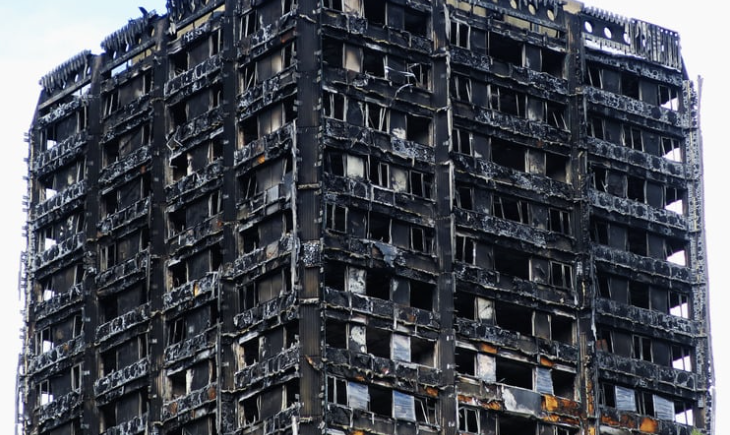Late last year, the Grenfell Tower Inquiry, which started in September 2017, drew to a close. The inquiry, which began three months after the fire, totalled 400 days of evidence in the UK’s biggest residential fire since World War Two.
Last year, we highlighted a culture of buck passing from organisations scrutinised along with the potential risk of corruption. In summing up, the lawyers for the beavered said that key organisations involved in the fire were “grossly negligent”, “fraudulent” and “reckless”, whilst the counsel to the inquiry referred to a denial of responsibility despite evidence of “incompetence”, “malpractice” and “dishonesty”.
In the run up to the fire, there were many structural and institutional flaws. Unlike many countries, in the UK, only one, instead of two, central staircases, were required in a tower block. Changes to legislation under Thatcher meant that external walls to buildings no longer required at least one hour of fire resistance. Other issues included the influence of commercial interests; poor cladding; no centrally activated fire alarm or central sprinkler system; lack of regular inspections and lack of fire doors. When residents expressed safety concerns in the months before the fire, these were dismissed.
Throughout the inquiry, it was highlighted that firms involved in the Grenfell fire tried to absolve themselves of as much responsibility as possible. Richard Millet KC, counsel to the inquiry, referred to ‘a merry go round of buck passing.’ But the systemic issues which allowed Grenfell to take place show a wider problem of failure in infrastructure governance and public investment management in the UK. 85% of experts say that the current UK housing law is not fit for purpose.
The race, class and disability element of the tragedy cannot be ignored. It is vital to highlight the institutional and structural disparities that happen because of poor infrastructure policies and practices. Ethnic minorities are disproportionately more likely to live in high rise buildings in the social rented sector and 85% of people who died in the fire were ethnic minorities, and 40% were disabled. Both ethnic minorities and people with disabilities are more likely to face structural and institutional inequality, including poverty.
Lawyers representing the bereaved, survivors and residents declared that Grenfell was “a human rights disaster, a systematic failure of state and private actors to protect the life, security and dignity of people” and that institutional racism “infected every aspect of the disaster.”
In 2019, research showed that residents in Kensington and Chelsea borough were the wealthiest in the country, earning three times the national average and the council had £274m in reserves at the time of the fire. Despite this, the borough is one of great economic divides with above average poverty rates and the area of the tower itself being in one of the most deprived areas in the UK. As we discussed in our article on Grenfell and addressing corruption risks, Grenfell was a social housing project, intended to serve the public.
Mr. Millet argued that there was a ‘the failure to pay due respect to the idea of ‘home’ as a physical aspect of human privacy, agency, safety and dignity’ and a ‘lack of respect’ for the victims and their families.
The tragedy and evidence from the inquiry begs us to ask the question: would such a tragedy, with several safety issues prior, have happened if Grenfell’s residents were of a different demographic? Would such a tragedy happen to, and then be treated with a lack of respect, if Grenfell’s victims were mostly white and middle class?
As we look ahead to see what crucial steps are being implemented to prevent future disasters like this, we see disappointment lurking ahead. In our previous article on Grenfell and addressing corruption risks, we reflected on the lack of professional bodies calling out the corruption of Grenfell. Yet many risks remain with the UK’s housing infrastructure.
The Grenfell fire unmasked an ongoing cladding crisis, where up to many buildings have been built with flammable material. Whilst the government has made plans to protect leaseholders from the costs of cladding, an estimation of over 650,000 people may be impacted by the cladding crisis across the UK. The government could do more to prevent this disaster to those disproportionately impacted by housing crises in the UK, especially for the most vulnerable. For example, they rejected a recommendation of disabled people in high rises having personal evacuation plans.
Meanwhile, the victims of the fire have called for a called for a national day of remembrance to mark the disaster and expressed a desire for criminal convictions. This may be for a charge such as corporate manslaughter, where gross negligence must be proven. Only 26 corporate manslaughter convictions have happened since the law was introduced in 2008, mostly to small firms with one or two victims, but the case for Grenfell remains strong. There is also a high court civil litigation taking place involving many members of the Grenfell community, the cladding manufacturer, the council and more.
Infrastructure, especially housing infrastructure, is a vital social issue. The Grenfell Fire should have never happened. But only a turning tide on UK housing infrastructure governance can prevent a disaster like this – with a disproportionate impact on ethnic minorities, people with disabilities and working class people – from being repeated.
